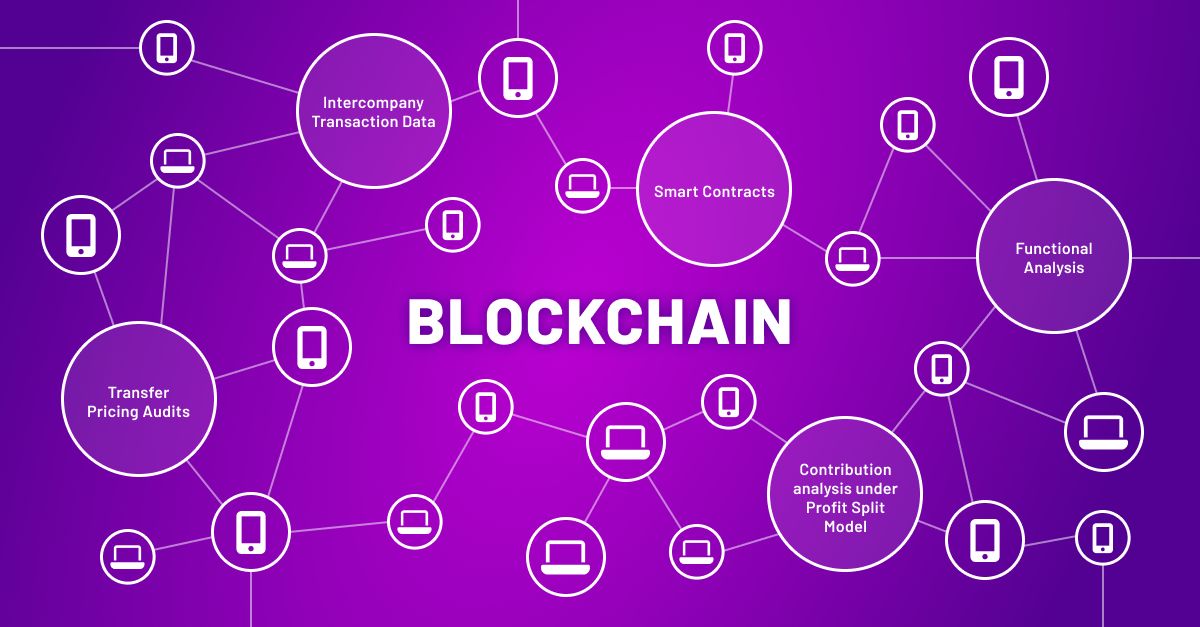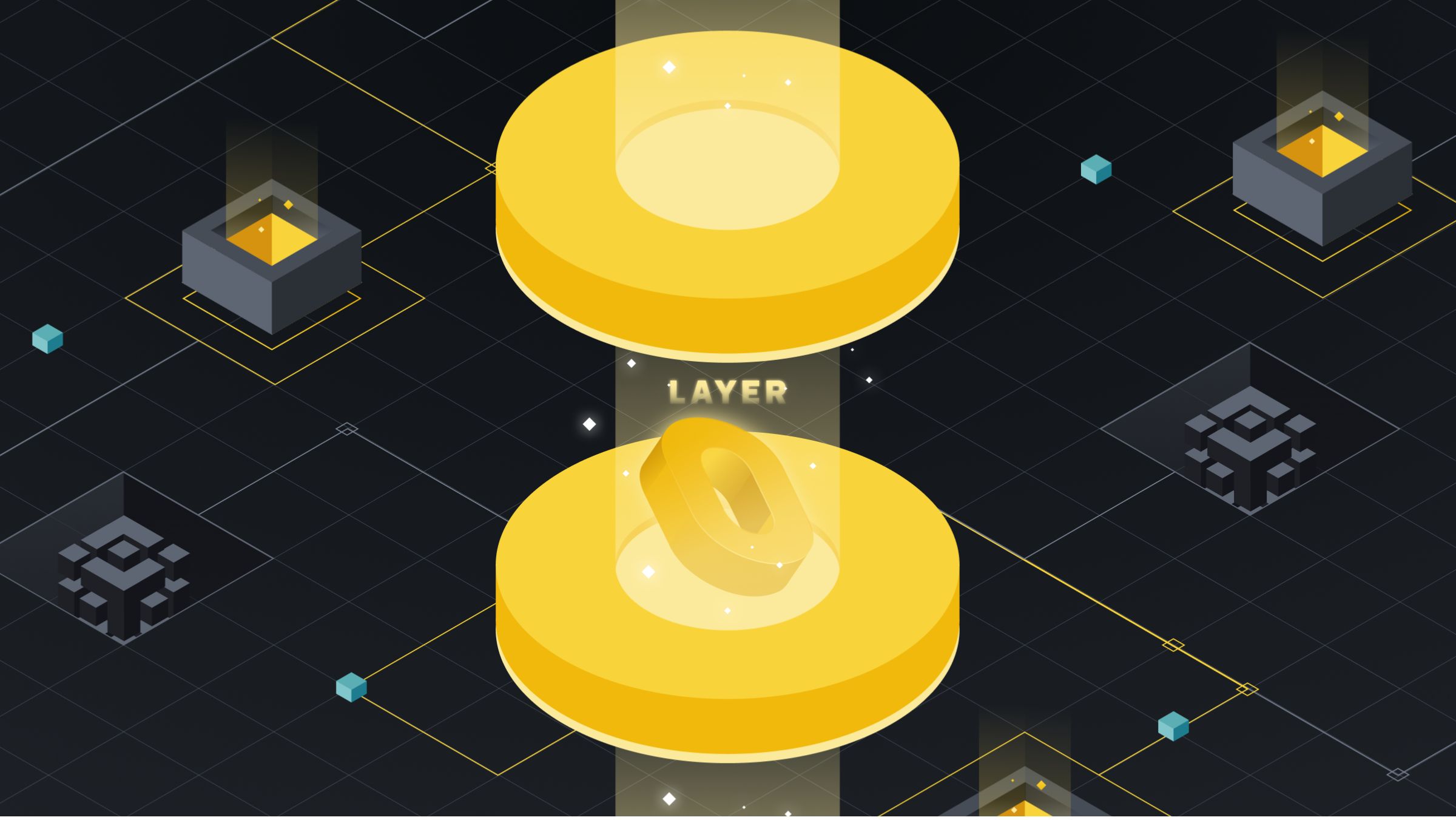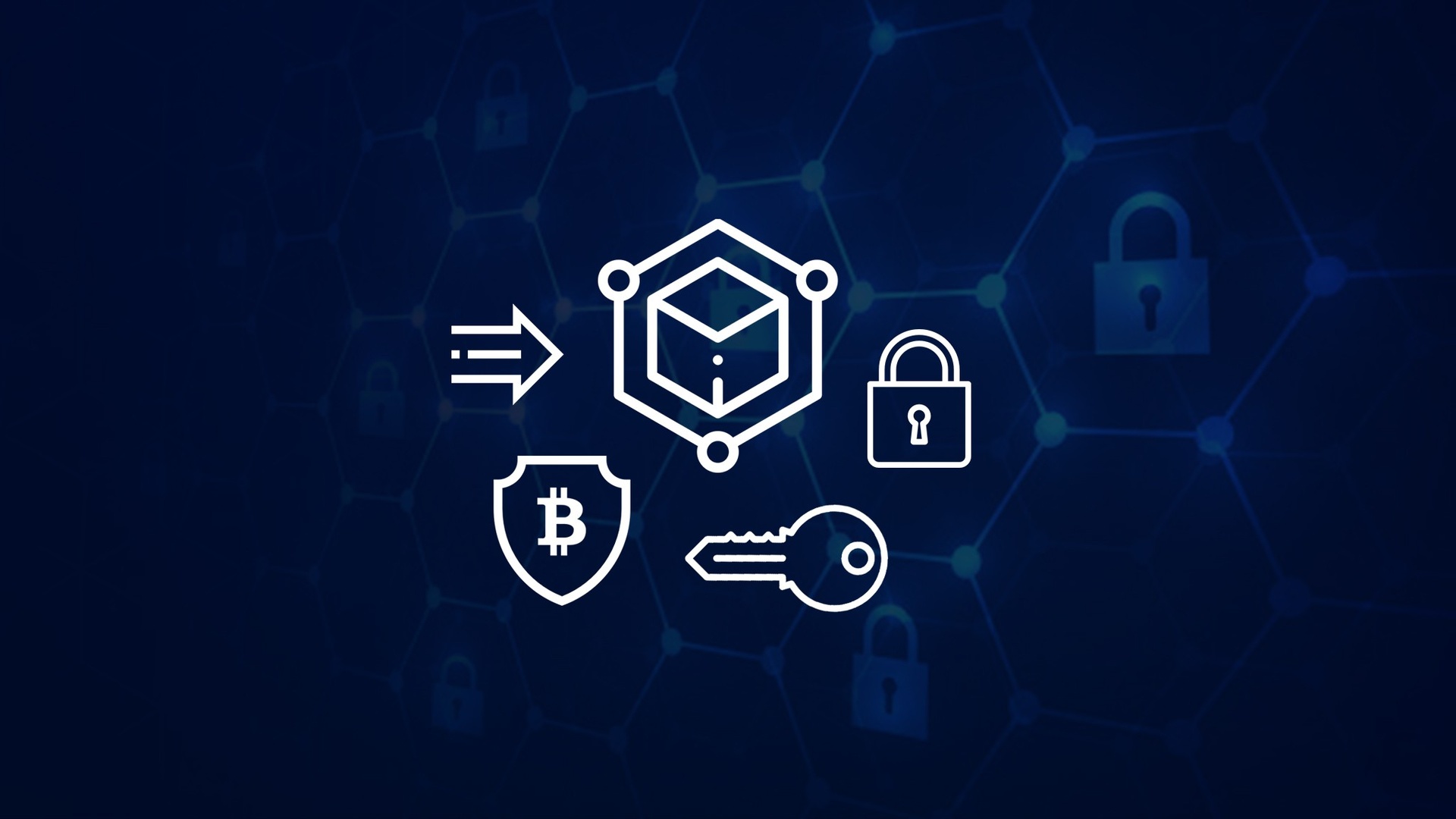What is Blockchain?
Blockchain is a revolutionary technology that has garnered significant attention in recent years. Simply put, blockchain is a decentralized digital ledger that allows multiple parties to record and share information in a secure and transparent manner. Unlike traditional centralized systems, where a single entity controls the database and its transactions, blockchain operates on a network of computers (nodes) that work together to maintain and validate the data.
The fundamental concept behind blockchain is that each transaction or piece of information is recorded as a “block” and added to a “chain” of previous blocks. Each block contains a unique cryptographic hash that ensures its integrity and links it to the previous block, creating an immutable and transparent record of all transactions. This decentralized structure eliminates the need for intermediaries, reduces the risk of fraudulent activities, and increases trust among participants.
One of the key features of blockchain is its consensus mechanism, which ensures that all participants agree on the validity of transactions. Different blockchain networks use various consensus algorithms, such as Proof of Work (PoW) or Proof of Stake (PoS), to validate and add new blocks to the chain. This consensus mechanism makes blockchain secure and resistant to tampering or unauthorized changes.
Furthermore, blockchain technology offers several advantages over traditional systems. It enables greater transparency, as all participants have access to the same information, eliminating the need for trust-based relationships. It also enhances security, as data stored on the blockchain is encrypted and distributed across multiple nodes, making it difficult for hackers to manipulate or compromise the system.
Blockchain is not limited to transactions involving cryptocurrencies like Bitcoin. Its potential applications span across various industries, including finance, supply chain management, healthcare, voting systems, and more. By leveraging blockchain, these industries can streamline processes, reduce costs, improve efficiency, and enhance trust among stakeholders.
In summary, blockchain is a revolutionary technology that provides a decentralized and transparent approach to record and share information. It offers numerous benefits, including increased security, enhanced trust, and improved efficiency. With its diverse range of applications, blockchain is transforming industries and paving the way for a more secure and decentralized future.
How Does Blockchain Work?
Blockchain technology operates on the principle of decentralization and cryptography to ensure the integrity and security of data. Understanding how blockchain works can help demystify its inner workings.
At its core, blockchain is a distributed ledger that functions through a network of computers (nodes). Each node has a copy of the entire blockchain database and works together to validate and record transactions. When a new transaction occurs, it is first verified by the nodes in the network.
Once verified, the transaction is combined with other transactions to form a block of data. Each block is given a unique identifier called a cryptographic hash, which serves as a digital fingerprint. This hash is created using complex mathematical algorithms that make it virtually impossible to alter the block without being detected.
Once a block is created, it is added to the existing chain of blocks in a sequential order. Each block contains the hash of the previous block, effectively creating a chain-like structure. This linking of blocks ensures that any alteration or tampering in one block would require changing the subsequent blocks, making it extremely difficult to manipulate the data in the blockchain.
Blockchains are often designed to have a consensus mechanism, which determines how new blocks are added to the chain. The most common consensus mechanism is Proof of Work (PoW), where nodes compete to solve a computational puzzle. The first node to solve the puzzle gets the right to add the new block to the blockchain. This process not only validates transactions but also prevents malicious actors from easily manipulating the blockchain.
Once a block is added to the blockchain, it becomes a permanent part of the network. Each node updates its copy of the blockchain to reflect the new addition. This synchronization and redundancy across multiple nodes make the blockchain resistant to single points of failure and ensure that the data remains intact even if some nodes fail.
Blockchain technology also supports smart contracts, which are self-executing contracts with the terms of the agreement directly written into the code. Smart contracts automate the execution of agreements and transactions, eliminating the need for intermediaries and reducing the risk of errors or fraud.
In summary, blockchain operates through a decentralized network of nodes that verify, record, and link transactions into blocks using cryptographic hashing. The consensus mechanism ensures the integrity of the blockchain, while smart contracts automate and enforce agreements. This transparent and secure technology is changing the way we store, process, and trust data.
Why Use Blockchain?
Blockchain technology offers several compelling benefits that make it an attractive solution for various industries and use cases.
One of the primary reasons to use blockchain is its enhanced security. The decentralized nature of blockchain, coupled with the cryptographic algorithms used to secure the data, makes it highly resistant to hacking and tampering. Additionally, the transparency of blockchain ensures that all participants have access to the same information, reducing the risk of fraudulent activities.
Blockchain also provides increased trust and transparency. By eliminating the need for intermediaries and central authorities, blockchain allows participants to directly interact and transact with each other. This removes the reliance on trust-based relationships and instead relies on the transparency and immutability of the blockchain. Participants can verify and validate transactions independently, creating a decentralized trust framework.
Another advantage of blockchain is the potential for improved efficiency and cost savings. Traditional systems often involve multiple intermediaries and cumbersome processes that can result in delays and higher costs. Blockchain streamlines these processes by enabling direct peer-to-peer interactions and automating tasks through smart contracts. This reduces the need for manual interventions, minimizes paperwork, and increases the overall efficiency of the system.
Furthermore, blockchain offers better traceability and provenance. With blockchain, every transaction and data entry is recorded on the immutable ledger, creating an auditable trail of information. This transparency enables participants to track and verify the origin, history, and movement of assets or goods. This can be particularly valuable in industries such as supply chain management, where tracking the journey of products is critical.
Blockchain technology also fosters collaboration and interoperability. With blockchain, multiple parties can securely and efficiently share data and conduct transactions without the need for third-party intermediaries. This opens up new possibilities for industries to collaborate and create shared platforms, enabling seamless workflows and interoperability between different systems.
Furthermore, blockchain has the potential to revolutionize industries such as finance, healthcare, and voting systems. By leveraging blockchain, these industries can address pain points, improve processes, and enhance trust among stakeholders. For example, blockchain can enable faster and more secure financial transactions, streamline healthcare data sharing, and ensure transparent and tamper-proof voting systems.
In summary, blockchain technology offers enhanced security, trust, transparency, efficiency, traceability, and collaboration. These benefits make it a valuable solution for various industries and use cases, revolutionizing traditional systems and enabling new possibilities in the digital era.
Applications of Blockchain
Blockchain technology is versatile and has the potential to revolutionize various industries and use cases. Let’s explore some of the key applications where blockchain is making a significant impact:
Financial Services: The financial industry has been one of the early adopters of blockchain. Blockchain-based cryptocurrencies, such as Bitcoin, have provided an alternative form of digital currency and transformed the way we perceive and transfer value. Blockchain also offers secure and efficient cross-border payments, eliminates intermediaries, and reduces transaction costs.
Supply Chain Management: Blockchain enables end-to-end visibility and traceability in supply chain management. By recording every transaction and movement of goods on the blockchain, stakeholders can track and verify the authenticity, origin, and quality of products. This helps in reducing counterfeiting, preventing fraud, and improving overall supply chain efficiency.
Healthcare: In the healthcare industry, blockchain can revolutionize the management and sharing of patient records. Blockchain allows secure and interoperable sharing of health information while maintaining patient privacy. It also enables better tracking of pharmaceuticals, reducing the risk of counterfeit drugs entering the supply chain.
Voting Systems: Blockchain has the potential to create transparent and tamper-proof voting systems. By storing votes on the blockchain, it ensures the integrity and immutability of the voting process. It provides a verifiable record of votes, eliminates fraudulent activities, and enhances trust in the democratic process.
Real Estate: Blockchain can streamline and automate real estate transactions by reducing the need for intermediaries such as lawyers and agents. It enables faster, more transparent, and secure property transfers, eliminating the risk of fraud and reducing costs involved in traditional real estate transactions.
Identity Management: Blockchain offers a decentralized and secure solution for managing digital identities. It allows individuals to have control and ownership of their personal data, reducing the reliance on centralized authorities. Blockchain-based digital identities can prevent identity theft, streamline KYC (Know Your Customer) processes, and enhance privacy.
Energy Trading: Blockchain can enable peer-to-peer energy trading, allowing individuals and organizations to directly buy and sell energy. It provides a transparent and secure platform for decentralized energy exchanges, promoting renewable energy sources and creating a more efficient energy market.
Insurance: Blockchain can streamline insurance processes by automating claims settlement and reducing fraudulent activities. It enables secure and transparent record-keeping of insurance policies and claims, ensuring trust and enhancing efficiency in the insurance industry.
Intellectual Property: Blockchain can revolutionize how intellectual property rights are managed and protected. By recording proof of ownership and transactions on the blockchain, creators can establish a verifiable record of their intellectual property, reducing the risk of copyright infringement and ensuring fair compensation.
These are just a few of the many applications of blockchain technology. From finance to healthcare, supply chain to voting systems, blockchain has the potential to reshape industries and transform the way we interact and transact in the digital age.
How to Use Blockchain
Using blockchain technology can seem daunting, but with the right knowledge and tools, it can be accessible to anyone. Let’s explore the key steps involved in using blockchain:
1. Educate Yourself: Start by gaining a basic understanding of how blockchain works and its potential applications. There are numerous online resources, tutorials, and courses available that can help you grasp the fundamentals of blockchain technology.
2. Choose a Blockchain Platform: There are several blockchain platforms available, each with its own strengths and use cases. For example, Ethereum is popular for building decentralized applications (DApps), while Hyperledger Fabric is well-suited for enterprise use. Research different platforms and choose one that aligns with your needs.
3. Set Up a Blockchain Network: If you want to create your own blockchain network, you’ll need to set up the network infrastructure. This involves installing and configuring the necessary software, creating network nodes, and establishing network consensus mechanisms.
4. Develop Smart Contracts: Smart contracts are self-executing contracts with predefined rules written on the blockchain. They automate the execution of agreements, eliminating the need for intermediaries. Learn a programming language compatible with your chosen blockchain platform (e.g., Solidity for Ethereum) and develop smart contracts to suit your specific use case.
5. Test and Deploy: Before using blockchain in a production environment, it’s crucial to thoroughly test your smart contracts and applications. Set up a test network to simulate real-world scenarios and ensure that your blockchain solutions function as intended. Once you are satisfied with the testing results, deploy your smart contracts or applications on the live blockchain network.
6. Secure Your Blockchain: Security is paramount in blockchain. Implement best practices to secure your blockchain network and smart contracts, including encryption, multi-factor authentication, and regular security audits. Stay updated with the latest security advancements and address any vulnerabilities promptly.
7. Join Existing Blockchain Networks: If creating your own blockchain network is not necessary for your use case, you can leverage existing blockchain networks. Many public blockchains, such as Bitcoin and Ethereum, offer open access for individuals and businesses to participate and transact on their networks.
8. Collaborate and Interact: Blockchain thrives on collaboration and interaction. Engage with other participants on the blockchain network, join relevant communities and forums, and explore partnership opportunities. This collaborative approach will help you gain insights, share experiences, and maximize the benefits of using blockchain technology in your domain.
By following these steps, you can begin using blockchain technology to revolutionize your business or personal endeavors. Remember to stay updated with the latest advancements and industry developments to make the most of this transformative technology.
Setting Up a Blockchain Network
Setting up a blockchain network requires careful planning and attention to detail. Here are the key steps involved in establishing a blockchain network:
1. Define Your Objectives: Clearly define your objectives for creating a blockchain network. Determine the specific problem you’re trying to solve or the use case you want to address. Understanding your objectives will help you choose the right blockchain platform and design the network architecture accordingly.
2. Choose the Blockchain Platform: Select a blockchain platform that aligns with your objectives and requirements. Consider factors such as scalability, security, consensus mechanisms, and programming language compatibility. Popular blockchain platforms include Ethereum, Hyperledger Fabric, and Corda.
3. Determine the Network Type: Decide whether you want to create a public, private, or consortium blockchain network. Public networks are open to anyone, while private networks restrict access to authorized participants. Consortium networks involve multiple organizations collaborating on a shared blockchain network.
4. Set Up Network Infrastructure: Establish the infrastructure for your blockchain network. This involves setting up the necessary hardware, such as servers or nodes, and installing the blockchain software. Ensure that you have a reliable and secure network connection for efficient communication between nodes.
5. Configure Nodes: Configure the nodes that will be part of your network. Nodes are the computers or devices that participate in the validation and storage of blockchain data. Depending on the platform you choose, you may need to set up different types of nodes, such as validator nodes, mining nodes, or client nodes.
6. Define Consensus Mechanism: Choose a consensus mechanism for your network. Consensus mechanisms ensure that all participants agree on the validity of transactions and maintain the integrity of the blockchain. Popular mechanisms include Proof of Work (PoW), Proof of Stake (PoS), and Practical Byzantine Fault Tolerance (PBFT).
7. Establish Governance Rules: Define the governance rules for your blockchain network. This includes determining who can participate as a node, setting the criteria for validating transactions or adding new blocks, and establishing guidelines for making network upgrades or changes.
8. Develop Smart Contracts: If your use case requires the execution of smart contracts, design and develop them using a programming language that is compatible with your chosen blockchain platform. Ensure that your smart contracts accurately reflect the desired business logic and rules.
9. Test and Deploy: Thoroughly test your blockchain network and smart contracts in a controlled environment to identify and resolve any issues or bugs. Conduct comprehensive testing to ensure that the network performs as expected and meets your objectives. Once satisfied, deploy your network on the live environment.
10. Maintain and Upgrade: Continuously monitor and maintain your blockchain network. Regularly update the blockchain software, address any security vulnerabilities, and ensure that the network operates smoothly. As your needs evolve, consider upgrading or expanding your network to accommodate new requirements.
By following these steps, you can successfully set up and manage a blockchain network that meets your objectives and provides a secure and efficient platform for your desired use case.
Transacting on the Blockchain
Blockchain technology revolutionizes the way transactions are conducted, offering increased security, transparency, and efficiency. Here is an overview of how transactions work on the blockchain:
Creating a Transaction: To initiate a transaction on the blockchain, the sender creates a digital record specifying the recipient’s address, the amount of the transaction, and any additional data relevant to the transaction. This record is then encrypted and signed using the sender’s private key.
Verification and Validation: The transaction is broadcasted to the network of nodes participating in the blockchain. Each node independently verifies the transaction’s validity by checking if the sender has sufficient funds and if the transaction adheres to the rules and conditions specified by the smart contract or the consensus mechanism of the blockchain.
Adding the Transaction to a Block: Once verified, the transaction is grouped with other validated transactions to form a block. Miners or validators compete to solve a computational puzzle, such as a Proof of Work algorithm, to add the block to the blockchain. The first miner to solve the puzzle broadcasts the solution to the network, and if it is accepted, the block is added to the blockchain.
Confirmation and Consensus: Depending on the blockchain platform and its consensus mechanism, the transaction may require multiple confirmations from different nodes to be considered final and irreversible. This confirmation process ensures consensus among the network participants and prevents double spending or fraudulent activities.
Recording the Transaction: Once the transaction is confirmed and added to the blockchain, it becomes a permanent part of the ledger. The transaction details, including the sender, recipient, and amount, are recorded and stored in a specific block, linked to the previous blocks in the blockchain. This creates an immutable and transparent record of all transactions on the network.
Transaction Transparency: Blockchain provides transparency, as all participants can access and verify the transaction details. Each transaction has a unique identifier or transaction hash, which can be used to trace the transaction’s history and view its status on the blockchain explorer.
Transaction Fees: Transactions on the blockchain typically require payment of transaction fees. These fees serve as an incentive for miners or validators to include the transaction in the blockchain. The fee amount varies depending on factors such as network congestion and the desired speed of transaction confirmation.
Smart Contracts and Complex Transactions: Blockchain technology enables the execution of complex transactions through smart contracts. Smart contracts are self-executing contracts with predefined conditions and rules written in code. These contracts automate and enforce the terms of agreements, reducing the need for intermediaries and ensuring the secure and accurate execution of transactions.
Cross-Border Transactions: Blockchain eliminates barriers and reduces the complexity associated with cross-border transactions. It enables direct peer-to-peer transactions without the need for intermediaries, significantly reducing transaction costs and eliminating issues related to currency conversions and settlement delays.
In summary, transacting on the blockchain involves creating a digital record, verifying and validating the transaction, adding it to a block through consensus mechanisms, recording it on the blockchain, and ensuring transparency and security. By leveraging the power of smart contracts, complex transactions can be automated and executed reliably. Blockchain technology revolutionizes transactions by offering increased security, efficiency, and transparency across a wide range of industries and use cases.
Blockchain Security and Privacy
Blockchain technology offers enhanced security and privacy features that make it an attractive solution for various industries. Here are the key aspects of blockchain security and privacy:
Decentralization and Immutability: The decentralized nature of blockchain makes it highly secure. Instead of relying on a single entity or server, blockchain operates on a network of computers (nodes) that work together to validate and record transactions. This eliminates the risk of a single point of failure and makes it difficult for malicious actors to manipulate or tamper with the data. Furthermore, the immutability of the blockchain ensures that once a transaction is recorded, it cannot be altered or deleted, providing a transparent and auditable history of all transactions.
Cryptography: Blockchain utilizes cryptographic algorithms to secure the data and ensure its integrity. Each transaction is encrypted using complex mathematical calculations, making it virtually impossible for unauthorized parties to access or alter the information. Additionally, cryptographic hash functions link each block to the previous block, creating a chain-like structure that ensures the integrity of the entire blockchain.
Consensus Mechanisms: Consensus mechanisms, such as Proof of Work (PoW) or Proof of Stake (PoS), play a crucial role in blockchain security. These mechanisms ensure that all participants in the network agree on the validity of transactions and work harmoniously to reach a consensus. This consensus process adds an extra layer of security by requiring the majority of participants to agree on the state of the blockchain, preventing malicious attacks or unauthorized changes to the data.
Privacy and Anonymity: While blockchain provides transparency by allowing all participants to view and verify transactions, privacy concerns remain, especially in public blockchains. However, advancements in privacy-focused technologies, such as zero-knowledge proofs and ring signatures, help address these concerns. These techniques allow users to provide proof of a transaction’s validity without revealing the actual details, providing a certain level of anonymity and privacy.
Permissioned Blockchains: In certain cases, such as enterprise or consortium blockchains, privacy is crucial. Permissioned blockchains enable control over who can participate and access the network. Participants are required to obtain permissions or credentials, and transactions can be selectively shared with authorized parties. This ensures that sensitive information is only accessible to those with permission, allowing for enhanced privacy and data protection.
Secure Smart Contracts: Smart contracts, built on blockchain, require careful attention to security. Contract vulnerabilities can lead to exploits or malicious activity. Smart contract developers must follow best practices, conduct rigorous security audits, and implement proper testing to minimize the risk of vulnerabilities and ensure the secure execution of contracts.
Data Encryption and Access Controls: In addition to the inherent security features of the blockchain, additional data encryption and access controls can be implemented to further enhance security and privacy. These measures protect sensitive data from unauthorized access and ensure that only authorized parties have access to specific information.
In summary, blockchain technology offers robust security and privacy features through its decentralized structure, cryptography, consensus mechanisms, and privacy-enhancing techniques. While ensuring transparency and traceability, blockchain also addresses privacy concerns through permissioned blockchains and advanced cryptographic methods. By leveraging these features and implementing best practices, organizations can leverage the power of blockchain while maintaining the security and privacy of their data and transactions.
Challenges of Using Blockchain
While blockchain technology brings numerous benefits, it also faces certain challenges that need to be addressed for widespread adoption. Here are some key challenges associated with using blockchain:
Scalability: Scaling blockchain networks to handle a large number of transactions is a significant challenge. The decentralized nature of blockchain, where every node participates in verifying and storing transactions, can lead to scalability issues. As more transactions are added to the blockchain, the network may experience delays and increased transaction costs. Various scaling solutions are being explored, such as off-chain transactions, sharding, and layer-two protocols, to improve the scalability of blockchain networks.
Energy Consumption: The energy consumption required for mining and validating transactions in some blockchain networks, especially those using Proof of Work consensus mechanisms, has raised concerns about sustainability. Miners solve complex mathematical puzzles to secure the network, but this process requires significant computational power and energy. Blockchain platforms are actively exploring alternative consensus mechanisms, such as Proof of Stake, to reduce energy consumption and improve sustainability.
Interoperability: Achieving interoperability between different blockchain platforms is a challenge. Currently, most blockchains operate as independent networks with limited interaction between them. Bridging different blockchains and enabling seamless transfer of assets and data across networks is essential for broader adoption and the realization of blockchain’s full potential. Efforts are being made to develop interoperability protocols and standards to enable communication and data exchange between different blockchain networks.
Regulatory Challenges: The regulatory framework for blockchain technology is still evolving in many jurisdictions. Governments and regulatory agencies are grappling with how to regulate cryptocurrencies, ICOs (Initial Coin Offerings), and smart contracts. Balancing innovation and consumer protection is a challenge, and regulatory clarity is needed to foster blockchain’s growth while addressing concerns related to security, money laundering, and privacy.
Privacy Concerns: While blockchain provides transparency, privacy concerns arise, particularly in public and permissionless blockchains. The immutable nature of the blockchain means that once information is recorded, it cannot be removed or altered. Balancing transparency and privacy in scenarios where sensitive data is involved is a challenge. Techniques such as zero-knowledge proofs and confidential transactions are being developed to enhance privacy on public blockchains without compromising the integrity of the technology.
User Experience: The existing user experience of interacting with blockchain applications is often complex and not user-friendly. Wallet management, private key security, and transaction fees are some of the pain points that need to be addressed. Improving the user experience and making blockchain applications more accessible to non-technical users is crucial for mainstream adoption.
Legacy System Integration: Integrating blockchain technology with existing legacy systems can be challenging. Businesses and organizations often face technical hurdles and resistance to change when adopting blockchain. Retrofitting blockchain into legacy systems requires careful planning, investment, and collaboration between different stakeholders.
In summary, while blockchain technology holds immense promise, it also faces challenges related to scalability, energy consumption, interoperability, regulatory frameworks, privacy, user experience, and legacy system integration. Addressing these challenges will be vital to realizing the full potential of blockchain and unlocking its benefits in various industries.
Conclusion
Blockchain technology has emerged as a groundbreaking innovation with the potential to transform various industries. Its decentralized and transparent nature, coupled with robust security features, offers immense benefits for businesses and individuals alike.
Through the decentralized consensus mechanism, blockchain eliminates the need for intermediaries, reduces the risk of fraud, and increases trust among participants. The transparency and immutability of the blockchain provide an auditable and tamper-proof record of transactions, mitigating the risk of data manipulation.
The applications of blockchain are vast and wide-ranging. From finance to supply chain management, healthcare to voting systems, blockchain revolutionizes how transactions are conducted, records are kept, and trust is established. It offers increased efficiency, cost savings, and improved security across various domains, enabling businesses and organizations to streamline processes and enhance collaboration.
However, blockchain is not without its challenges. Scalability, energy consumption, interoperability, regulatory concerns, and privacy considerations are hurdles that must be addressed for widespread adoption. Overcoming these challenges requires continued innovation, collaboration, and the development of standards and frameworks to ensure seamless integration and operation of blockchain technology.
As blockchain continues to evolve, it is crucial for businesses and individuals to stay informed and adapt to this transformative technology. Educating yourself about blockchain, selecting the right platform, and understanding its potential are essential steps in harnessing the power of blockchain for your specific use case.
In conclusion, blockchain has the potential to revolutionize industries, drive innovation, and reimagine how transactions are conducted. Its decentralized and secure nature can foster trust, transparency, and efficiency in various domains. With careful planning, collaboration, and continued development, blockchain technology will continue to reshape our digital landscape and open new possibilities for a decentralized and interconnected world.

























